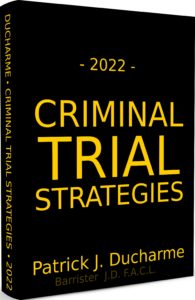The Court of Appeal for Ontario was required to consider a two-person conspiracy to traffic in cocaine in the case of Bogiatzis.1 This case highlights the unique difficulties that occur when the court is dealing with just a two-person conspiracy. The prosecution’s case was dependent upon a series of meetings between two Crown witnesses. The accused was present for two of these meetings.
One of the prosecution’s two witnesses did not support the Crown’s theory of a conspiracy. In fact, he testified that there was no agreement between himself and the accused to traffic in drugs. He admitted to using the accused’s name in his conversations with the police agent, but only to impress. He did not correct the police informant’s mistaken impression that the accused was involved because it did not suit his plan.
The court ordered a new trial on the basis that the trial Judge failed to properly instruct the jury on the limited use to be made of recorded conversations involving the co-conspirator Crown witness and the police informant but not the accused. The trial Judge failed to ensure that the jury understood that to convict the accused they had to be convinced that he was part of an ongoing conspiracy to traffic in cocaine, not simply a party to one transaction.
A finding that a conspiracy existed beyond a reasonable doubt would, apparently, decide the entire case since there were only two alleged co-conspirators. On August 7, 2013 the Court of Appeal for Ontario in R. v. Puddicombe2 found that the standard instructions to juries about the use of co-conspirators’ acts and declarations are to be dealt with in the same fashion as conspiracies involving more than two people. The court rejected the argument that the standard instruction operates in an unfair way when the criminal conspiracy involves only two people. The court concluded that while some instructions are necessarily complicated we begin with the premise that juries can and do understand and apply instructions given to them by trial judges. This presumes the trial judges are able to deliver the instructions in plainly understood language.
In this case the accused was alleged to have formulated a plan to kill her longtime boyfriend, Dennis Hoy. Her alleged co-conspirator was Ashleigh Pechaluk. The two women were tried separately. At her trial Ms. Pechaluk testified and denied wielding the axe that killed Hoy. She was acquitted, and then called as a witness for the Crown in Puddicombe’s case. Again, Pechaluk denied killing Hoy but she provided devastating evidence against Puddicombe.
Puddicombe was convicted and appealed her conviction on the basis that the standard Carter instruction should not be used in two-person conspiracies. That standard instruction requires the trial Judge to tell a jury it must be satisfied beyond a reasonable doubt that there is a plan, then decide if the accused was probably a participant in that plan based on all the direct evidence that is admissible against that accused alone, then finally and only if step two has been satisfied, the jury can use the acts and declarations of the other member of the conspiracy against the accused to decide if the person is guilty beyond a reasonable doubt.
The end result is that Ontario’s Court of Appeal has rejected the suggestion that the standard instruction to juries about the use of co-conspirator acts and declarations is unfair in conspiracies involving only two people.
The above is the an excerpt of Patrick J Ducharme’s book, Criminal Trial Strategies, available at Amazon or in bulk through MedicaLegal Publishing.
Read or listen to the Preface and Introduction and subscribe to Patrick Ducharme’s Youtube Channel.

